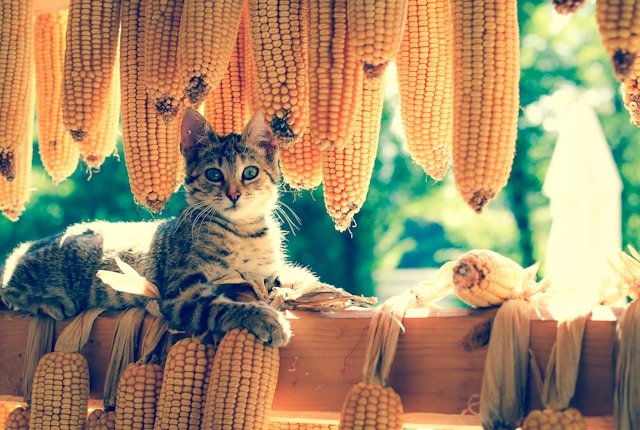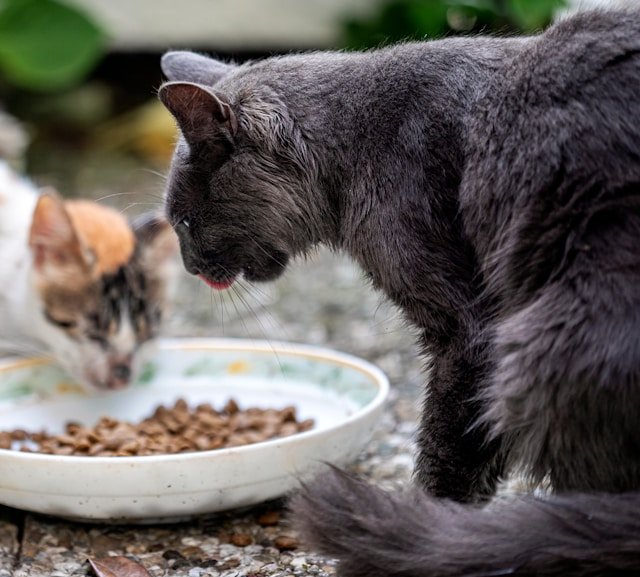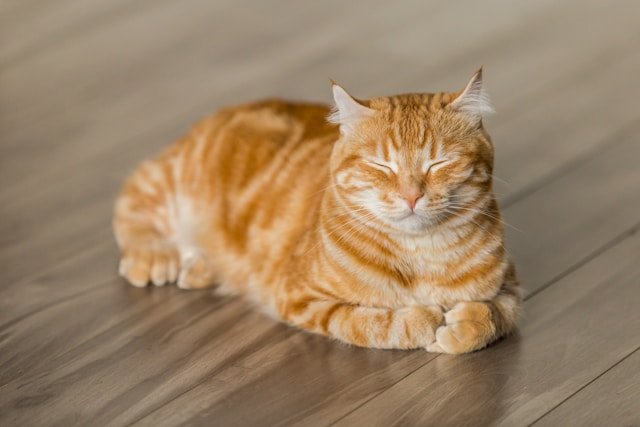
Raw cat food is a diet that primarily consists of uncooked ingredients, typically mimicking the natural diet of wild cats. It includes raw meat, organs, bones, and sometimes vegetables, fruits, and supplements. Advocates of raw cat food believe that it offers numerous health benefits, aligning closely with a cat’s natural dietary needs as obligate carnivores.
Raw Cat Food Benefits

- Improved Digestion:
- Raw cat food can be easier to digest as it is closer to a cat’s natural diet, reducing instances of digestive upset and improving stool quality.
- Healthier Skin and Coat:
- Many owners report shinier coats and healthier skin, attributing this to the high-quality proteins and essential fatty acids found in raw diets.
- Increased Energy Levels:
- Cats on a raw diet often exhibit higher energy levels and increased vitality, possibly due to the unprocessed, nutrient-dense nature of the food.
- Better Dental Health:
- Chewing on raw bones and meat can help clean teeth naturally, reducing the buildup of plaque and tartar and promoting overall dental health.
- Weight Management:
- A raw diet can help maintain an ideal weight, as it typically contains fewer carbohydrates and fillers compared to commercial kibble.
Components of a Raw Cat Food Diet

- Raw Meat:
- The primary ingredient, providing essential proteins and fats. Common choices include chicken, turkey, beef, and rabbit.
- Organs:
- Essential for providing vital nutrients. Liver, kidneys, and hearts are often included for their rich vitamin and mineral content.
- Bones:
- Ground or whole bones provide calcium and phosphorus, crucial for bone health and overall development.
- Vegetables and Fruits:
- While not always necessary, small amounts of vegetables and fruits can be added for additional nutrients and fiber.
- Supplements:
- Essential for balancing the diet, supplements such as taurine, omega-3 fatty acids, and probiotics are often included.
Considerations and Safety

- Nutritional Balance:
- Ensuring a balanced diet is critical. Consulting with a veterinarian or a pet nutritionist is recommended to create a nutritionally complete raw diet.
- Food Safety:
- Handling raw food safely to prevent bacterial contamination is crucial. This includes proper storage, preparation, and hygiene practices.
- Transitioning to Raw:
- Transitioning cats to a raw diet should be done gradually to prevent digestive upset. Introduce small amounts of raw food mixed with their current diet, gradually increasing the raw portion.
- Potential Risks:
- There are risks of bacterial infections (e.g., Salmonella, E. coli) to both cats and humans. Proper food handling and hygiene can mitigate these risks.
Popular Raw Cat Food Brands

- Primal Pet Foods:
- Offers a variety of raw food options, including freeze-dried formulas for convenience.
- Stella & Chewy’s:
- Known for high-quality, grain-free raw food options, including frozen and freeze-dried varieties.
- Instinct Raw:
- Provides raw frozen and freeze-dried options, focusing on high-quality ingredients and balanced nutrition.
- Nature’s Variety:
- Offers a range of raw food products, including complete and balanced diets for cats.
Homemade Raw Cat Food Recipes
For those interested in preparing raw food at home, it’s crucial to follow balanced recipes to ensure nutritional adequacy. Common ingredients include:

- Lean meats (chicken, turkey, beef)
- Organ meats (liver, kidneys, hearts)
- Ground bones (or bone meal)
- Supplements (taurine, fish oil, probiotics)
The best raw cat food provides a balanced and complete diet that mimics the natural prey diet of cats, offering high-quality proteins and essential nutrients. Primal Pet Foods is highly regarded for its variety of raw food options, including freeze-dried formulas that are convenient and nutritionally balanced. Stella & Chewy’s is a top choice for pet owners looking for grain-free raw food options, known for their commitment to using high-quality, natural ingredients. Nature’s Variety Instinct Raw offers a range of raw frozen and freeze-dried foods, focusing on providing a balanced diet with all necessary vitamins and minerals.

Tiki Cat Raw is another premium brand, offering raw food that is both nutritious and palatable, using ingredients like chicken, turkey, and fish. Darwin’s Natural Pet Products is praised for its fresh, high-quality raw food delivered directly to your door, ensuring your cat gets the freshest meals possible. Feline Natural Raw offers high-protein, low-carb raw food options that cater to the carnivorous needs of cats, using natural and sustainably sourced ingredients. Vital Essentials provides raw food that focuses on the whole prey model, including meat, organs, and bones, ensuring a complete and balanced diet for your cat.
Smallbatch Pets offers raw cat food made with locally sourced, organic ingredients, providing a nutritious and environmentally friendly option. PurrForm is known for its premium raw food that includes a high percentage of meat, organs, and bones, designed to meet the specific dietary needs of cats. These brands are recognized for their dedication to quality and nutrition, making them some of the best choices for raw cat food available on the market.

Homemade raw cat food allows you to control the quality and source of ingredients, ensuring your cat receives the freshest and most natural diet possible. A basic homemade raw cat food recipe often includes lean meats like chicken or turkey, supplemented with organ meats such as liver and heart for essential nutrients. Ground bones or bone meal are crucial in homemade raw cat food to provide necessary calcium and phosphorus, promoting strong bones and teeth. Adding a small amount of vegetables, like carrots or spinach, can provide additional vitamins and fiber, though it should be minimal since cats are obligate carnivores. Supplements like taurine, omega-3 fatty acids, and a multivitamin powder are essential to ensure your homemade raw cat food is nutritionally complete. Preparing homemade raw cat food requires strict adherence to food safety practices, including proper storage, handling, and hygiene, to prevent bacterial contamination.
Transitioning your cat to homemade raw food should be done gradually, mixing small amounts of raw food with their current diet to avoid digestive upset. Consulting with a veterinarian or a pet nutritionist is critical when preparing homemade raw cat food to ensure all nutritional requirements are met. Homemade raw cat food can be cost-effective in the long run, especially if buying ingredients in bulk and preparing large batches to freeze. Many pet owners find that cats on a homemade raw diet have shinier coats, higher energy levels, and better overall health, reflecting the benefits of a natural and balanced diet.

Organic raw cat food is made from ingredients that are free from synthetic pesticides, hormones, and antibiotics, ensuring a natural and healthy diet for your cat. Many pet owners prefer organic raw cat food because it reduces the risk of exposure to harmful chemicals and additives, promoting better overall health. Brands like Smallbatch Pets and Feline Natural offer organic raw cat food options, using high-quality, sustainably sourced ingredients to provide a balanced diet. Organic raw cat food typically includes a variety of organic meats, such as chicken, turkey, or beef, as well as organic organ meats for essential nutrients. Adding organic vegetables and fruits in small amounts can enhance the nutritional profile of organic raw cat food, providing vitamins and antioxidants.
Organic raw cat food is often more expensive than conventional raw food, but many pet owners find the investment worthwhile for the health benefits it offers. To ensure a complete and balanced diet, organic raw cat food often includes supplements like taurine, omega-3 fatty acids, and probiotics. The production of organic raw cat food follows strict guidelines to maintain its organic certification, ensuring high standards of quality and safety. Cats with allergies or sensitivities may benefit from an organic raw diet, as it eliminates potential irritants found in non-organic foods. Transitioning to organic raw cat food should be done gradually, mixing it with your cat’s current food to avoid digestive upset and allow for a smooth adjustment.

A raw cat food diet plan typically consists of a balanced mix of raw meat, organs, and bones to mimic the natural prey diet of wild cats. When creating a raw cat food diet plan, it’s crucial to include lean meats like chicken, turkey, or rabbit, which provide high-quality protein. Organ meats, such as liver and kidneys, are essential components of a raw cat food diet plan, supplying vital nutrients like vitamins A and B. Ground bones or bone meal should be included in the diet to ensure your cat receives enough calcium and phosphorus for healthy bones and teeth. Small amounts of vegetables and fruits, such as carrots and blueberries, can be added to a raw cat food diet plan for additional vitamins and fiber. Supplementing the raw diet with taurine, omega-3 fatty acids, and probiotics is important to ensure your cat’s nutritional needs are fully met. It’s advisable to prepare meals in bulk and store them in individual portions in the freezer to maintain freshness and convenience.
Transitioning your cat to a raw food diet should be done gradually over several weeks to prevent digestive upset and allow your cat to adjust to the new diet. Regular veterinary check-ups are essential to monitor your cat’s health and make any necessary adjustments to the raw cat food diet plan. Consulting with a veterinarian or a pet nutritionist when developing a raw cat food diet plan is crucial to ensure the diet is balanced and meets all of your cat’s dietary requirements.

Raw cat food can provide numerous health benefits by closely aligning with a cat’s natural dietary needs. However, it requires careful planning, proper handling, and consultation with a veterinarian to ensure it meets all nutritional requirements and is safe for your cat. Whether choosing commercial raw food brands or preparing homemade meals, a well-balanced raw diet can contribute significantly to the overall health and well-being of your feline friend.


